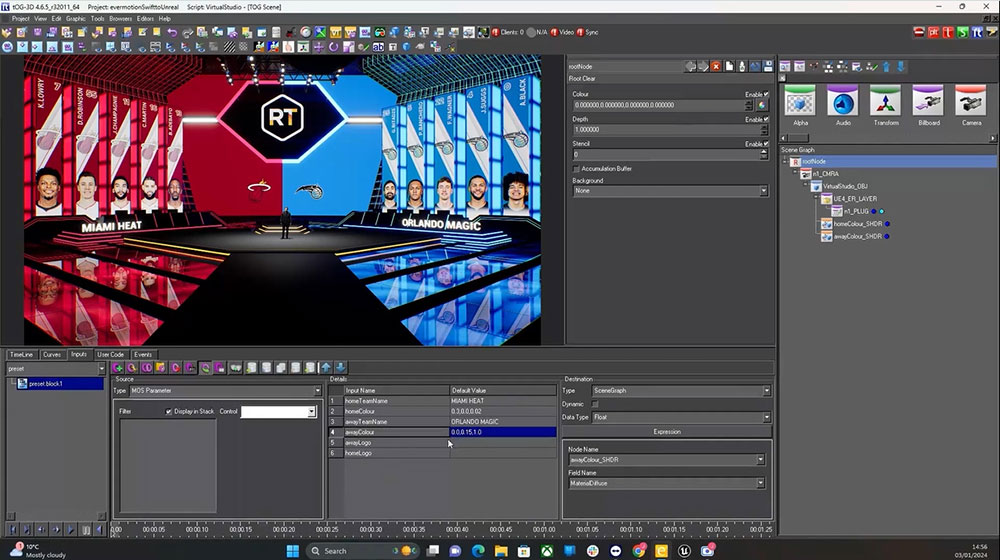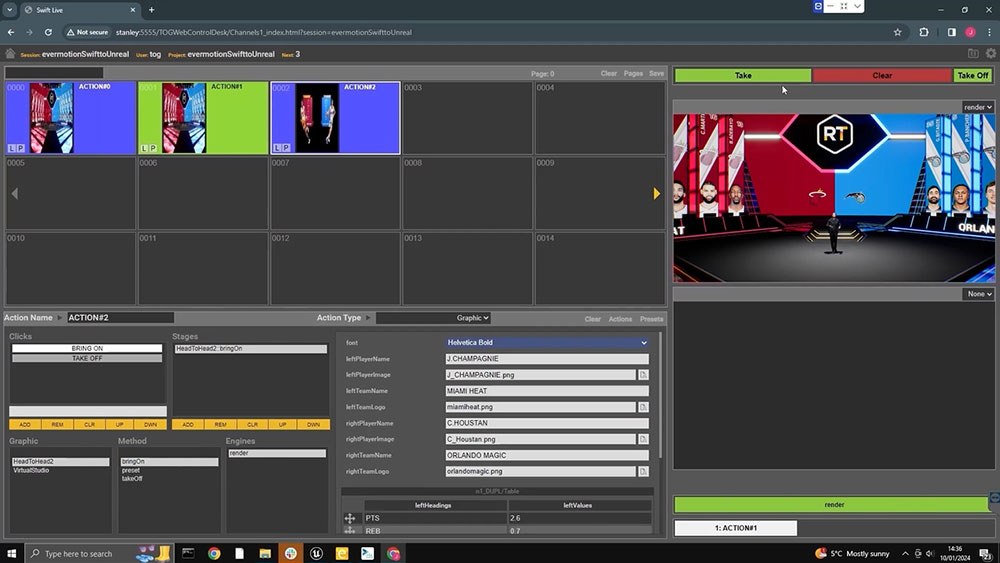RT Software’s new Unreal Engine feature enhance its Swift Studio software for virtual studios and AR graphics, allowing greater interactivity and flexibility when triggering graphics to air.

RT Software has released a new feature to enhance its Swift Studio software for virtual studios and augmented reality graphics. Unreal Engine projects were already supported within the Swift environment, however now it is possible to link Unreal’s dynamic fields into those in Swift’s graphics, allowing greater versatility and flexibility when triggering graphics to air. It gives an operator the ability to interact with Unreal Engine’s graphics live on air, through the familiar Swift Live browser interface.
Live broadcast operations depend on intuitive user interfaces that are familiar and consistent across an entire broadcast facility. It is important that operators are able to respond immediately to live events within news or sports programmes and avoid damaging on air mistakes. Normally, introducing a different way to control a subset of a broadcaster’s graphics is a risk to live operations.
By using the same Swift system for all areas of a broadcast facility, regardless of using Unreal Engine or not, the need for retraining on specific events is avoided, while still retaining the option to include Unreal Engine graphics whenever required. RT Software’s approach allows a mixed approach to on air graphics.

The critical part of the integration is that Unreal Engine graphics retain their ability to update dynamically through the Swift Live interface when they go to air. Dynamic aspects could range from onscreen text fields, to lighting colours – or any other feature that may need to change when a graphic goes to air. This capability could be used to modify a virtual studio’s lighting to match a winning team’s colours, for example.
The complete process starts with the Swift CG+ editor, when the Unreal Engine’s blueprints (their dynamic fields) are mapped to relevant fields in the Swift editor. Once the graphic has been distributed to the renderer, the gallery operator can call up each graphic via their Swift Live browser interface, create a playlist, modify values, preview and trigger to air at the right moment.
Mike Fredriksen, RT Software Commercial Director said, “We are seeing definite interest in working with Unreal Engine. By allowing Unreal Engine graphics to exist within Swift, the process of delivering graphics to air is enhanced and greatly simplified.” www.rtsw.co.uk




















